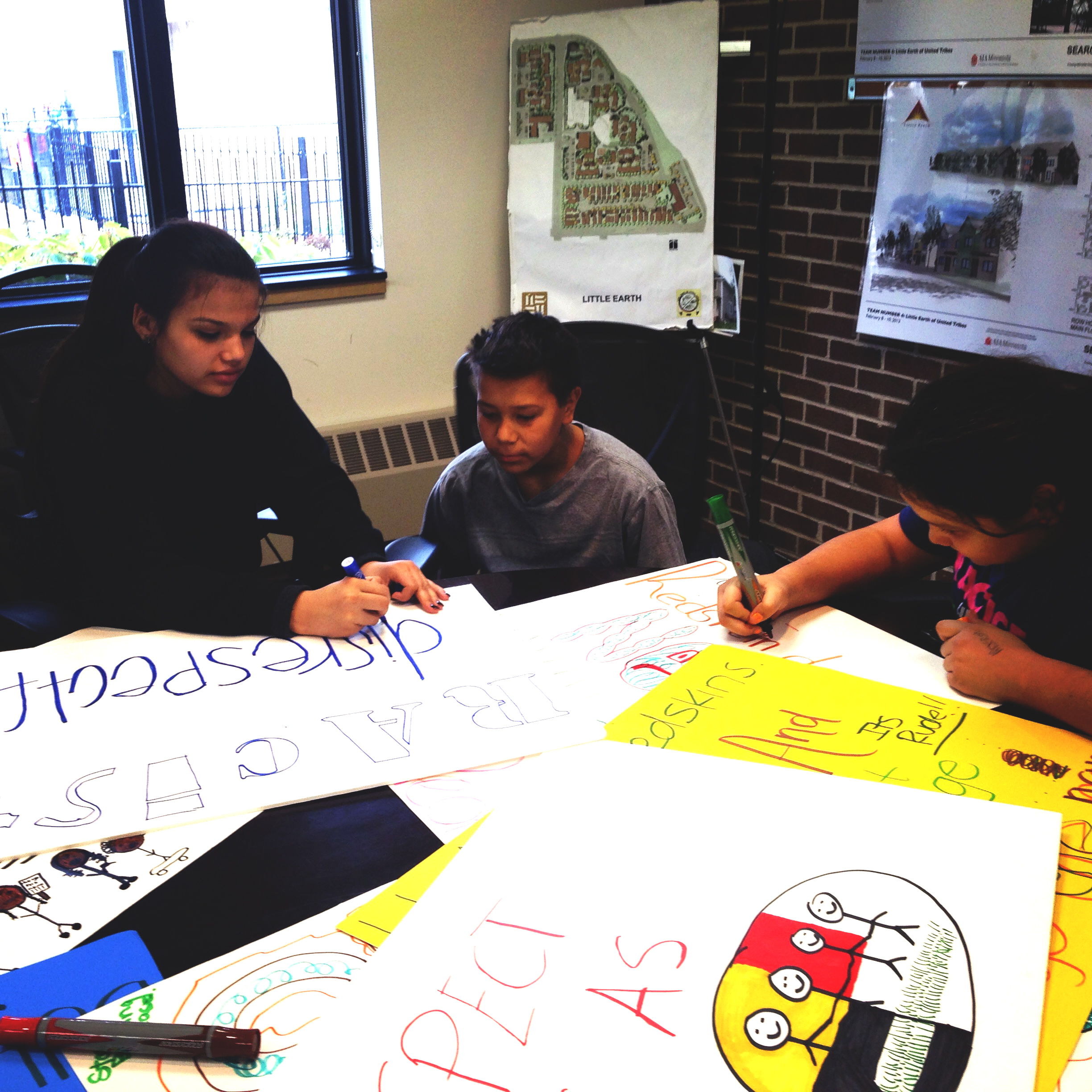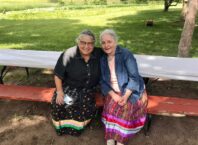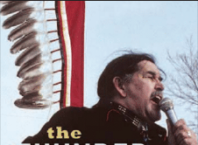 Hundreds of
Hundreds of
protesters gathered outside the Hubert H. Humphrey Metrodome in
downtown Minneapolis on Nov. 7 to speak out against the Washington
mascot. According to Little Earth Education Director Sasha Houston
Brown, the rally was the site of some clashes between football fans
and Indigenous protesters.
“There were
some very intoxicated white football fans getting in people’s faces,
mocking the drums, making fake war whoops, doing fake dances,” she
said. “We can’t say there’s not an issue when that’s going on.”
There are
strong feelings on both sides of this debate. In social media posts
that argue to keep the mascot, a common theme admonishes protesters
to “get over it.” In Google + user Ron Brown’s words, “this PC
group of rejects have almost destroyed our society."
Another common
argument in favor of the mascot is that it is an honorific. To this
end, Washington team manager Dan Snyder invited Navajo Code Talkers
to the team’s game on Nov, 25. “The
#Redskins
celebrate &
honor members of the Navajo Code Talkers,” read the team’s official
Twitter posts about the event.
Is this a
superficial issue of offense, over sensitivity, or political
correctness? If not, why do mascots and the popular depiction of
Native Americans matter, not just to Native communities, but to
American society as a whole?
“Their
ignorance isn’t just out of nowhere, it’s reflective of the
collective American ignorance,” said Brown of mascot supporters.
“It just speaks to the more complex notion of the history of
America and the history of First Nations and Indigenous people and
the fact that America is still not ready as a society to take a hard
look into our past and openly talk about what happened.”
Taking a hard
look at history and future movements for social justice within both
our education systems and society at large is at the core of the
mascot debate.
“It’s not
about blame, it’s not about shaming people, and it’s not about white
guilt, but it’s about doing justice and speaking the truth about
things,” Brown said. “We can’t really have conversations about
race and identity and cultural appropriation and mascots and imagery
without looking at these core issues that are really central to the
debate.”
Brown, a
member of the Santee Sioux Nation, helped organize a Native youth
march shortly before the larger protest.
“On the one
hand, I thought maybe I shouldn’t even get involved in this issue
because there is so much going on in my community and I don’t want to
get pegged as someone who just talks about cultural appropriation or
stereotypes,” she said. “But it was really when I thought about
our young people and the ways that this does impact them and the ways
it impacts us all [that I got involved].”
In 2004,
several researchers conducted a psychological study on the impact of
mascot imagery on Native American youth entitled “Of Warrior Chiefs
and Indian Princesses: The Psychological Consequences of American
Indian Mascots.” This four-part study involving youth from
different reservations found that “exposure to American Indian
mascot images has a negative impact on American Indian high school
and college students’ feelings of personal and community worth, and
achievement-related possible selves.”
Brown feels
that these are some of the most compelling reasons to advocate for
mascot changes.
“You think
about being a Native child and the only time that you see yourself in
media is as a sports mascot or a costume or you see the rare very
depressing news story,” she said. “It’s all negative and they
don’t see themselves portrayed as they are and as they should be.”
This imbalance
in the portrayal of Native people in the media takes its toll on
Native youth across the country.
“Native
youth have the highest rates of suicide among any ethnic population
in the United States – the statistics are staggering,” Brown said.
“I’m not saying sports mascots are directly causing suicide, but we
have to look at the the messages [Native youth] are receiving,
explicit or implicit, from dominant society around who they are and
their own value.”
Brown says
that one of the factors that contributes to these dominant
stereotypes is a denial of the present lived experiences of Native
people.
“When we
talk about Natives, whether it’s in a political climate or a social
climate, it’s from this past, romanticized Indian experience,”
Brown said. “We don’t talk about contemporaneity for Indigenous
people and that invisibility contributes to things like having the
Redskins be acceptable … When you have a derogatory racial
caricature and name like the Redskins, it’s somehow OK because
[people] can’t place it with a friend, a family member, a child that
they work with on a daily basis. They can’t place it within a
relevant personal context, and so in a lot of ways that human element
is completely void in the debate.”
The
dehumanization of Indigenous people and communities has far-reaching
consequences.
“When we
look at some of the acts that are happening to tribal people on
tribal lands, those can only take place as long as our cultures and
people are seen as dehumanized and other,” said Brown. “In no
other circumstances would you be contaminating the water, putting
pipelines through, passing legislation where these communities can’t
even prosecute crimes that happen on their own lands.”
Brown says
that as long as Native people are viewed as caricatured mascots, many
of the more tangible issues and injustices Indigenous communities
face will continue.
“When you
have your nation’s capitol’s team named the Washington Redskins, that
epitomizes the way that Native people are looked at and depicted in
our nation and society,” said Brown. “As long as we continue to
be viewed as a mascot, all of these issues will continue to persist.”






